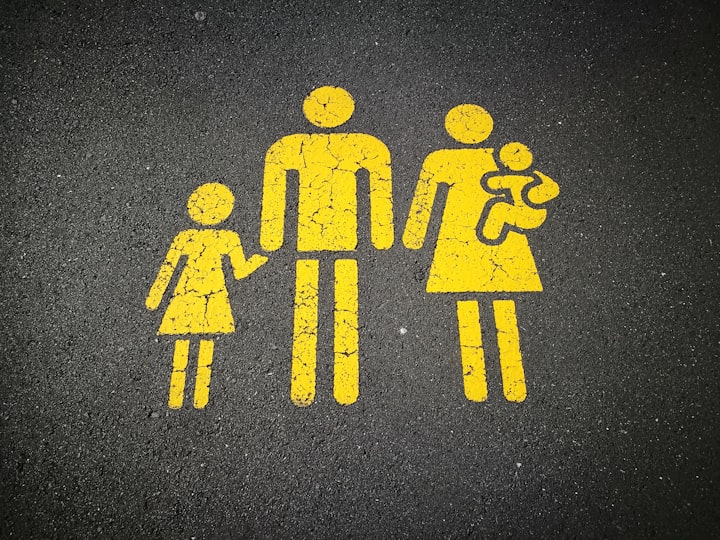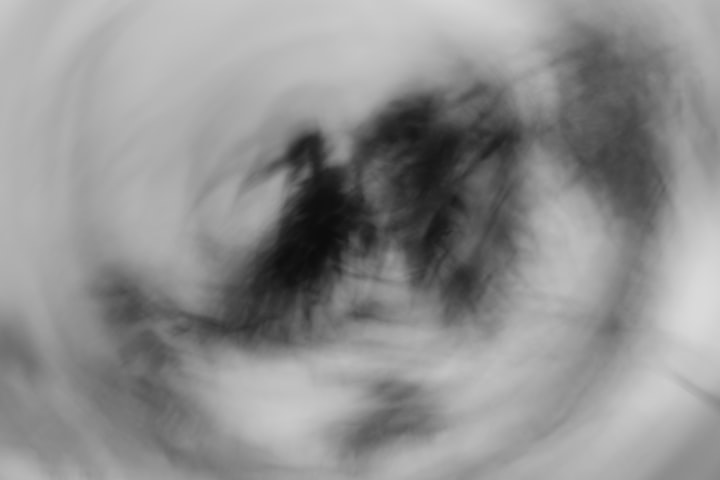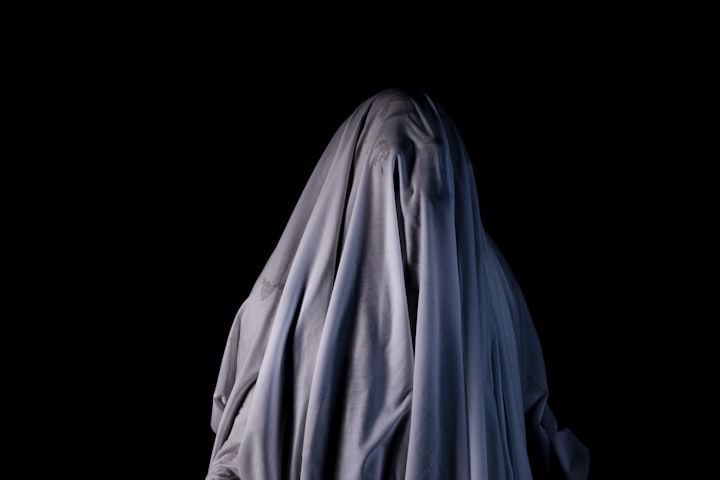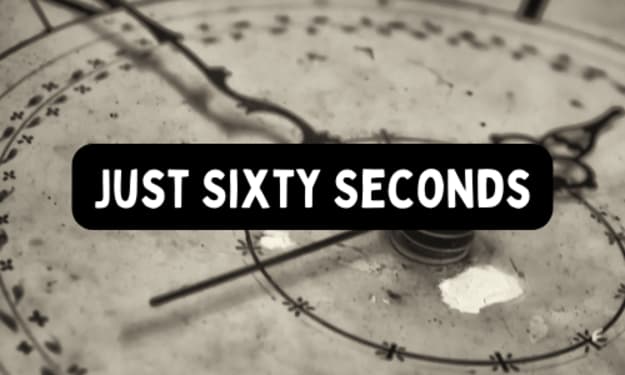The Secret Life of Dreams: The Ins and Outs of Sleep.
Dreaming life and it's connection to the waking Self.

I’ve always been interested in other worldly topics, often wondering whether there is life after death? Do ghosts exist? And is that demon I see in sleep paralysis really trying to possess me?
In my previous article, I briefly spoke about my first encounter with what I believed to be a ghost. It has been 20 years now, since I saw the lady made of moonlight – as I would refer to her when I was a child. As years went by, and I learnt more about the world, the memory that I so fervently recalled to be real, felt more and more like a dream.
Which made me start to contemplate; what defines a dream? Is there any significance to what and who we dream of? Can our dreams predict the future? Can you dream the same dream as another person at the same time? And is that demon really trying to possess me?
What are Dreams made of? The ins and outs of sleep.

The average human dreams for approximately 2 hours per night, and experiences at least 5 -7 dreams, majority of which can be hard to retain, with ones that occur closer to morning being what people generally remember more lucidly.
There are four stages of sleep, each taking approximately 90 – 120 minutes to complete, and repeat throughout the night. Generally, an individual can dream in any of the four stages of sleep, but the most vivid and memorable occur in deep sleep (also known as REM sleep).
The first stage of sleep is light sleep. During this stage the heart rate decreases as well as body temperature, which continues to drop during the second stage, where the muscles relax, and you are no longer conscious of your surroundings. The immune system begins to repair the damage done during the day, and increased blood flow is given to the muscles.
The third stage is even deeper, metabolic rates are extremely slow. During the fourth stage (REM), the eyes move rapidly back and forth – hence the name, Rapid Eye Movement. Breathing may become erratic, and brain activity increases. This is the stage where most dreams occur.
Carl Jung – Archetypes, and the collective unconscious.

Carl Gustav Jung, has been equally important to dream research as Sigmund Freud, who he initially worked with. Jung perceived dreams and the unconscious as forms of creative activity that contain universal wisdom.
He acknowledged aspects of Freuds work, however he did not believe that dreams were disguising taboo desires – specifically sexual. While Freud paid particular attention to what dreams could tell us about a person’s childhood and development, Jung took a different approach, and focused on future developmental potential.
Jung agreed with Freud that the psyche is layered. Consciousness is the tip of the iceberg, and what lies beneath the water is our unconscious. However, Jung added the addition of the collective unconscious, which is basically made up of universal patterns of experience and behaviour – known as archetypes.

An example of archetypes could be motherliness, or fatherliness, the child or other important roles within life. They can also be models for common human life situations or typical patterns of personality development. For example, the parent - child relationship, and the setting of the family home.
To Jung, archetypes are the most important aspects of our dreams, and the role of dreams is to provide unconscious knowledge, in order to accompany the conscious knowledge we acquire, and therefore further expand our sense of self.

Calvin Hall - Dreaming life and its connection to the waking lifestyle

Other dream theorists, such as Alfred Adler, Erich Fomm, and Calvin Hall focused on how dreams help us manage our everyday lives. They focused on the connection between dreams and our everyday life, and found that many of our dreams have problem solving properties, and maybe preparing us for the next day.
Amongst these authors, Hall, is arguably the most influential. Demonstrating through his research that there was a strong connection between dream content and the person’s conscious personality.
Discovering that dreams contain a great deal of material from our everyday life experiences, Hall, also found that over a lifespan, there can be a trend or a high degree of consistency within peoples dreams, including the relationships, issues, emotional and behavioural reactions, and even objects, constantly repeat throughout a person’s dreaming life.
Existential Dream Interpretation

Existentialists are highly critical of Sigmund Freud’s and Carl Jung’s theory systems, which they believe resulted in an over interpretation of dreams. Conversely to Freud and Jung, existentialists practice under the guise of the phenomenological approach, with greater emphasis upon a person’s individual experience as being a unique phenomenon, rather than basing interpretation on theoretical abstractions and preconceived notions.

Medard Boss, a Swiss Psychiatrist, describes the viewpoint of existential interpretation of dreams the most consistently. Asserting that, we as humans, are psychologically open from the outset.
However, our openness is often stripped from us, due to the harshness of society, resulting in experiences of alienation from the self and our own subjective experience of the world.
Our openness is expressed in our dreams that give creative, even poetic, interpretations of our life experiences. Therefore, they must be allowed free expression, and to be seen as a unique individualistic story.
This interpretation provides the dreamer with a more immediate, emotional contact with their life experiences. Instead of analyzing dreams to determine any complexes, or troublesome motives that may be present in the dreamer’s psyche.
Boss uses a more appreciative approach, highlighting what dreams might be saying through bringing the dreamers attention to overlooked nuances. And focusing more on spontaneity and creativity when working with dreams, instead of intellectualizing an individual’s experience.
Types of Dreams

Symbolic Dreams
This is the most common type of dreaming people encounter. It is abstract in nature, there is little to no narrative thread. Jung asserts that this type of dream has many functions. It may be adding to a situation within your waking life that is missing, repressed or neglected. Furthermore, it may serve as a compensatory function for conscious attitudes, such as demonstrating a perspective or situation that is completely opposite to your waking psyche, and the dream serves to restore psychical balance.

Clear Dreams
These are the opposite to symbolic, often dreams of this nature are linear, and depicts a factual message. Its purpose is to focus attention on a past situation, and may bring up emotions or memories that have gone unnoticed from the previous day. For example, this might be experiencing a dream that depicts a memory from childhood, such as an instance of being bullied or being told off by a family member or another archetype that represents authority. Such as a police officer, teacher, etc. Bringing your attention to your perception of authority.

Nightmares

A nightmare is a symbolic dream, that consists of intense feelings of fear, terror, anxiety or panic upon waking. Typically, they consist of a hostile situation in which the dreamer may be getting chased by another human, animal or a monster. Or they may be in a life-threatening situation, such as falling in to a never ending abyss, feeling paralysed, or lost.
Nightmares can also be about trauma, depicting past experiences. Jung asserted that nightmares are highly important for a person’s individuation or the assertion of their self, as it allows a person to face their shadow.

The shadow being the hidden aspects of oneself, both good and bad, which the ego (conscious self) has either repressed or never recognised. It is basically for the most part, the repressed desires, impulses, morally questionable motives, childish fantasies and hidden resentments. However, it can also harbour aspects of the inner child and the primitive, which can lead to personal development and growth when faced and processed.
Example: As a child, I grew up in a small coal mining town, we lived only a kilometre away from a large brown coal power station. To cool it’s turbines, there were three pondages surrounding the station. I was petrified of the site, and had a recurring nightmare of swimming out in to the middle of the pondage, unaware that I was slowly getting closer and closer to the gnashing jaws that were the entrance of the power station. Sometimes I would be sucked in to the turbines, other times I would suddenly be on top of one of the tall cooling towers, before falling in to the black abyss that awaited me.
Premonitory Dreams

Premonitory dreams predict forthcoming events. Most premonitory dreams involve people that we have a close relationship with, however there are instances where people have premonitory dreams of distant relations or even public figures they’ve never met. So if you dream about the death of a close friend or loved one is it predicting a real life event or is it telling you something more?
Typically this type of dream is symbolic and delivers a personal message rather than a premonition. Such as dreaming of the death of your mother, this could be showing you an emerging fear of losing your mother or another motherly figure within your life. It could also symbolise a transformation of your inner mother, or your conception of what motherliness is.
Example: When my great grandmother was young, she suffered a serious bout of pneumonia, resulting in severe hallucinations from her high fever. The doctors weren’t sure whether she was going to survive. One night she had a dream that she was in a beautiful English garden, she thought she’d died and gone to heaven. However, a warm and loving voice descended upon her saying ‘it is not your time’. A beautiful golden carriage emerged, filled with roses, the year 1997 engraved on the back. Sure enough, she recovered from her severe illness, and 70 years later, within days of Princess Diana’s funeral in 1997, she passed away in her sleep.
Telepathic Dreams

Telepathic dreams consist of some form of thought transference between the dreamer and another person. They can also allow for real-time communication between two dreamers, also known as a shared dream. This consists of two dreamers engaging with each other in the same dream landscape, and experience similar events.
Example: One night my Grandfather had a dream that he was walking through his neighbourhood. His neighbour, a lovely woman who he’d known since he’d moved there, asked if she could walk with him. He accepted her request, they spoke of their days, what they’d been up to since they last caught up. Before long, they came to a crossroad, my Grandfather’s neighbour invited him to continue walking with her, turning left. He thought about it for a moment, but his intuition told him to go in the opposite direction, so they said their goodbyes. My Grandfather woke the next morning, walking out the front to get the newspaper, and was stunned to see an ambulance outside his neighbour’s house, she had passed away in her sleep. From that day onwards, my Grandfather asserted that he had shared a dream with his late neighbour, and often questioned whether he would have survived the night, if he’d chosen to follow her.
Sleep Paralysis – Is that demon I see really trying to possess me?
I awoke from a troubled sleep, but remained in a twilight state, as if under a spell. There was a growing chill in the air or in my mind. I saw a soft glow and a menacing shape which brooded evil and which I thought I recognised. I knew I was in danger, but the peril was not on the physical plane. (GRS, Mead 1863-1933).

The tale above, and many others like it, suggest that spirits are real, and under the right conditions can interact with humans. Many psychics, shamans, and energy workers will tell you that spirits, and other beings not of the physical plane are an essential aspect of our reality but cannot be perceived unless in the right conditions.
In psychology the condition Sleep Paralysis is used to explain nocturnal paranormal experiences. Including ghost encounters, alien abductions and out- of - body experiences.
SP is a condition where a person experiences temporary paralysis of the body shortly after waking up, and can less commonly occur shortly after falling asleep. It is characterised by feeling reasonably awake and aware; however your entire body is paralyzed, generally lasting a few seconds, and rarely as long as a few minutes.
Sleep paralysis is closely related to the normal paralyzing aspect of REM sleep, which is called muscle atonia. Researchers suggest muscle atonia plays a vital role, and acts as a protective factor against people acting out behaviours and movements within their dreams. Such as running whilst dreaming about running. Muscle atonia makes sure you don’t run in to a wall, trip over your cat, or injure yourself in anyway whilst your asleep.
When sleep paralysis occurs, the mind is fully awake, however the body is still affected by muscle atonia. In some instances, people will experience hallucinations, these can be auditory, visual and tactile.

Probably the most interesting part of this condition is the nature of auditory hallucinations. Many people think that only people with serious mental health conditions, such as those with schizophrenia, experience auditory hallucinations. Particularly when they are experiencing a psychotic episode, but this is simply not true.
In a study conducted in 1984, it was indicated that approximately 10% of the population have experienced hallucinations of some sort, 30 % of the experiences being auditory hallucinations, often described as ‘other worldly voices’ or ‘phantom voices’. (Wilson, 1985)
A more recent study found that 39% of responders to a survey investigating the rate of hallucinations claimed they had experienced them. With 27% describing the incident as being during the day, whilst not under the influence of any form of drugs or alcohol, nor suffering from a mental illness. (Cheyne, 2003).
Colin Wilson, argues that the nature of sleep paralysis, may actually be caused by disembodied entities. Asserting that as ridiculous as it might sound, that entities being behind sleep paralysis, makes much more sense than the unconscious mind theory, that stipulates that the entities people see are merely manifestations of their unconscious. (Wilson, 1985).
In his 1981 book Poltergeist! Wilson discusses the work of Max Freedom Long, who asserted that humans possess three souls, the lower soul, the middle soul, and the higher soul.

According to Long, the lower soul handles the essential energies or forces of the body, it can be stubborn and sometimes refuses to do its vital work. The middle soul is more human, it is more aware, and has the ability to communicate. These two souls are joined together, in the body that is controlled by the lower soul, that is used to shield and protect both.
The higher soul, some calling it the higher self or guardian angel, controls our future, and works in accordance with the middle soul’s suggestions and desires.
After a person passes away, their lower soul, can become disconnected from the other two. Once independent it becomes a form of wondering ghost, unable to remember who it is or where it came from.
According to Long, the Kahuna, Hawaii’s native Magicians, can call upon these lower souls to psychically attack, or even kill, a person that they despise – also known as being of victim of ‘the death prayer’.
A Kahuna can acquire lower souls, either through finding them or borrowing them from another Kahuna, using psychic powers. Once under the Kahuna’s control, the lower soul is given extra energy, enabling them to possess the bodies of unsuspecting sleeping humans.
Alas, most individuals can protect themselves from such attacks, as their lower soul will likely have more energy than the invading one. However, when confronted with lower souls that have been given an extra amount of energy, the person may be more vulnerable, and have trouble defending themselves.

Much like vampires, lower souls drain the energy from their victims. Sometimes the Kahuna will instruct their lower souls to ‘play’ with their victims, attempting to propagate more energy from their activities.
When playing, lower souls may throw objects, make loud noises, move objects, and generally cause mischief. Behaving very similar to poltergeists. Which makes me question whether lower souls and poltergeists are effectively the same entities?
I hope you enjoyed learning all about dreams and what magic they possess. If you would like to learn how to improve your recall of your dreams, please see the list below!
Don't forget to like, subscribe, and leave a tip, if you would like to see more content.
How to Improve Dream Recall
Here are some steps that you can take to improve the recall of your dreams:
- When you go to bed, take a moment to think about your past dreams and what you like to dream about tonight.
- Set your alarm to go off every hour and a half, so you’ll wake up around the times that you leave REM sleep. If you sleep with another person who is likely going to be grumpy about being woken up multiple times during the night, drink at least 1.5litres of water just before you go to bed, to ensure nature calls at least once during the night.
- Keep a journal or piece of paper and pen, right next to your bed, so if you do wake up in the middle of the night you can quickly jot down any dreams you’ve had.
- Try to wake up slowly in the morning, keeping your eyes closed and attempting to keep the images and mood of the dream, to help your brain commit it to long term memory.
Thanks for reading!
References:
Cheyne, J. A. (2003). Sleep paralysis and the structure of waking-nightmare hallucinations. Dreaming, 13(3), 163-179.
Afterlife (1985), Wilson, Colin, The leisure Circle Ltd., London.
Poltergeist! (1981), Wilson, Colin, Caxton Editions, London.
Hicks, R. A., Bautista, J., & Hicks, G. J. (1999). Boundaries and level of experience with six types of dreams. Perceptual and Motor Skills, 89(3), 760-762.
About the Creator
Emm Margaret
Hi there!
Thanks for stopping by! I hope you enjoy my little family of stories, they are very dear to my heart. ❤️







Comments
There are no comments for this story
Be the first to respond and start the conversation.